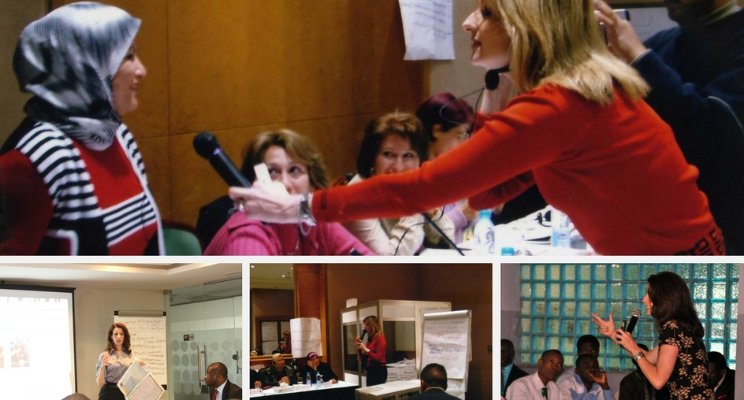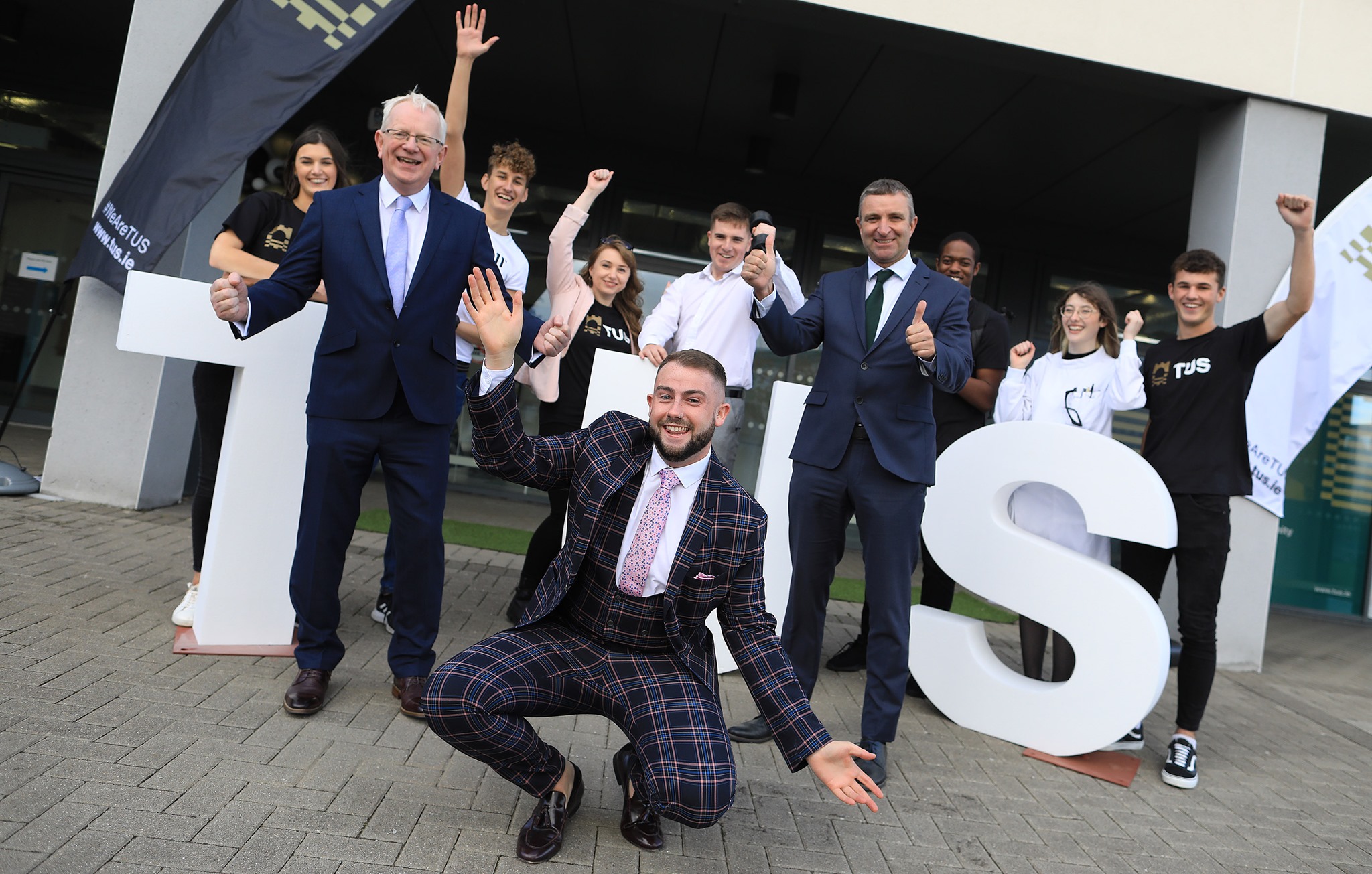At the beginning of this month I had the privilege of being the Master of Ceremonies for the first Cork University Business School (CUBS) conference.
The theme was “Shaping Ireland’s Future” and the list of impressive speakers included top business leaders, entrepreneurs and broadcasters. From Marissa Brown, one of Ireland’s most successful business women and creator of Cocoa Brown to Harry McCann, the founder of the first digital youth council of the world. Each person sharing their vision, their journey and their story.
And it’s precisely how they tell their story – how well they communicate – that will largely mark each one of the speakers as the successes they are. Research shows that when you line up people with equal competencies, the better communicators will always have the competitive edge.
As a former CNN reporter and anchor, I first learned the power of communications the lens of journalism: how to write compelling copy that hooks a viewer. After my days at CNN, I managed international campaigns – for politicians – like the first female parliamentary candidates in Iraq and opposition parties in Egypt – and on issues – like increasing immunization awareness in Cambodia.
Today, as a strategic consultant with Fuzion Communications, I see communications as a solid combination of style and strategy.
What does that have to do with you?
Quick!
Without any further preamble from me, find someone and shake their hand.
What did you get?
Did every single one of you deliver a warm, firm embrace? Fingers curling around the other person’s hand with the pads of your fingers making contact with their hand in a meaningful way? Did you clasp for a full second or two?
Or did some of you find that you shook hands with a limp, dead fish!? Or who got the arm wrestler – the squeezer of death?
Why do I make a big deal about a handshake?
Because it’s often the very first thing we do when we’re introduced to someone – and for many of us – we don’t have any idea about whether we’re doing it right – or even if there is a right way or a wrong way.
But make no mistake – how you shake hands does send a message. Think about it. What does shaking hands with the arm wrestler or the dead fish say to you? Every time you interact with someone – you are communicating something – either by design or by default.
Whether I am working with clients or participating in a business conference like the upcoming CUBS event, I constantly witness that:
“Communications is not a soft-skill, it’s a critical skill.”
Thankfully, communications is also a skill that can be learned – and put into action for better results – in every part of your lives.
Any time you have what I call a “communication event” – you are either moving your relationship forward or backward with that other person – or people – in your work and in your personal life. I mention both, because we aren’t two different people – we don’t have a professional life and a personal life – we just have a life.
For instance, applying skillful communications is critical when you first have a big idea. How are you going to pitch your product, platform or service? Even more than the market research and the projection numbers, the story you tell will either connect or not connect – with your intended audience.
How do you take the kernel of an idea, or, as you mature in your field, the depth of your knowledge and best communicate that kernel or knowledge -to various audiences? It takes emotional intelligence and communications training.
This past spring, the University of Florida officially announced a new translational communications centre dedicated to making science and tech better understood by all. They understand the importance of training scientists how to communicate to a lay audience.
There are two main facets of any communication event: content and delivery – and there are teachable strategies around each.
Before you create any content, you need to apply an AIM strategy. This is devised by Stanford University as Audience. Intent. Message. In that order.
1. AUDIENCE. Take a moment to consider who is in your audience.
Are they new-hires or veterans? Senior management or the executive board? Women or men or both? Do they prefer Elvis or the Beatles? Tea or coffee? PC’s or Macs?
Every audience is different. Try to get inside their heads. What are their hopes, dreams and fears?
I sometimes ask clients to write their agenda. Then write a second agenda from their audience’s point of view. Then I have them throw out their agenda and begin again from the second one!
2. INTENT. Your intent is never simply to inform. If you’re just doing that, then put your information in an email and hit the send button. You must be trying to motivate or inspire your audience to some sort of action. Define your goal very clearly. Too often I see this one overlooked. The goal is too broad and ill-defined. What is it exactly that you want your audience to do after you’re finished speaking? Even if it’s just to agree to another meeting. That’s okay. Be very specific.
3. MESSAGE. Only after you have deliberated points 1 and 2 should you move on to craft your message. Like intent, this must be clear too. Write it down. One sentence! Here’s the definition I learned from organizing campaigns:
A message is “brief, memorable, repeatable, emotional and data-backed”
But it’s not only the data. While supportive, taken stand-alone, data dumps are often dry and boring. Your message is your call to action. Your spoken declaration of your written intent. Your motivation! State it clearly and state it often. Don’t assume your audience is just “getting it!”
Next! Now that you’ve crafted content, How do you deliver your message?
Think of presentation delivery as three legs of a stool, – words, para-lingual and body language.
1. WORDS. Use powerful, colourful, imaginative words. Don’t waffle or equivocate. Be bold. Choose active verbs not flat ones. Go for it in your word choice! Have you heard those people who say words are only 7 to 10 percent of communications?? Try watching a foreign film without subtitles and tell me if you understand 90-93 percent of what’s going on!! The words do matter!
2. PARA-LINGUAL. This mouthful just means the way we say our words. The tone, the pace, the volume, the pitch. These are tools we naturally vary when we’re talking to family and friends, but often get left behind when we deliver “business stuff.” When we don’t use them, they leave us sounding robotic, rote, dull and lifeless! You got ’em for football and rugby matches. Don’t leave them at home when you go to work!
3. BODY LANGUAGE. Whether we like it or not, unless we’re master poker players, our bodies are always “leaking” our emotions. And people are always reading us. How we hold our arms, our hands. Does your listening or concentrating face look interested or disinterested? Other people notice, so, take some ownership and get retrained to appear more engaged.
As we look to the future of Ireland’s economy, business leaders too, must learn how to improve their communications. Across vertical silos. Across countries and oceans too.
Like it or not, Brexit proponents and Donald J. Trump discovered how to break down and communicate potentially complicated messages in a simple way to reach their targeted audiences. While critics may argue that those simpler messages also played on a constituency’s anger or fear, imagine what can happen when one creates simple, captivating messages that seek to inspire and motivate people to positive action?
It’s not too soon – or too late – to get started getting deliberate about your communications. Great communications equals great relationships in business and in life.
Thank you CUBS for such a fantastic event!
Gina London is an award-winning former CNN correspondent who now serves as director of Strategic Communications at Fuzion Communications with offices in Dub;in and Cork, Ireland.









